Are You Ready for SHTF?
A year or so ago, I became interested in preparing for a disaster, so I went to the Internet to see what other folks are doing to prepare. I was surprised to learn the number of people who have been preparing for quite some time, and also at the level of their preparations; purchasing remote properties, building up a personal arsenal, and buying and storing food stocks for their families.
I figured I needed to ‘get on board’ and start my own preparations. I had a lot to do and a lot to consider; food stocks, weapons and ammunition, off-the-grid living,communications, tools, skills, bug out bag, get home bag, maps, cash, precious metals, and much more. Whew!
I am a planning-type person, and I don’t usually do anything without careful consideration and a solid plan. I like to think through what I will do, what I might need in the way of tools, parts, etc., and what my desired results are before I begin a project. Like all my projects, whether they be a family vacation, changing the brakes on my car, or preparing for a disaster, I feel a need to plan.
I decided to work on my preparedness tasks in parallel. As I was building up my food stocks, I also built up my weapons and ammo stock, and continued to read and learn about preparedness and survival. When I began to tackle a bug out plan, I found the task quite difficult as I thought through the three elements of how I tackle projects:
- What is the task or tasks involved?
- What items and tools will I need?
- What are my desired results?
Right away, I knew the answer to question three. In a bug out situation, I desired to stay alive and have the best quality of life possible for the situation. Answering questions one and two were not so easy. The planning gene in my head caused me to think about what actually is involved with pre and post “bugging out” in order to answer the first two questions. As I thought about making my plan, a sound solution to bugging out became quite murky.
There are many websites, blogs, and videos available via the Internet that provide information, ideas, and examples of bug out situations, bug out equipment, and bug out strategies, and I eagerly studied as much as a I could. I initially thought bugging out was a mighty fine idea when the SHTF. After careful consideration, though, I have concluded that bugging out should be my last resort, my “plan Z”, and only after I’ve tried every possible way to avoid it. I offer these bug out cons for your consideration:
The Plan
Everyone should have a plan and equipment for bugging out for those extreme situations when your back is to the wall, or marauding gangs are torching every house on your street. If you must bug out, have a pre-planned destination, and you must get there before your supplies run out. Essential to your bug out plan is to clearly define the condition(s) that would trigger your “got to bug out” alarm.
Remember, though, you’ll be quitting your job, abandoning your house, and your bills will pile up in your overflowing mailbox and remain unpaid. When a crisis occurs, you will not have time to make a successful bug out plan, so you must make your plan now. Anyone can make a plan, but it takes careful thought and consideration to make a successful plan.
Quality Of Life
The notion of bugging out is quite simple; grab your stuff and go. However, after bugging out and arriving “somewhere”, then what? What will you do and what will be your quality of life? When you are at home, all your equipment, food stocks, weapons, and gear are basically within easy reach.
If you have prepared and planned well, you can stay indoors for quite some time and enjoy a high quality of life. You can continue to sleep in your bed, have a bathroom down the hall, and even keep up with current events and what’s happening in your neighborhood.
The act of bugging out brings on its own set of potentially dangerous problems that you will have to deal with and suffer through “on the fly.” In all of my Internet travels, I have yet to see a bug out bag that was stocked and equipped as well my home. Bug out bags usually provide basic survival-type equipment and rations for up to 7 days.
The prospect that my situation would become that much more precarious after my rations ran out is none too appealing. Can I really depend upon hunting, fishing, and berry scavenging?
Land Mines
You are much safer in your own home in most situations. With adequate planning and supplies, you can hunker down and survive through chemical and even biological gas clouds. You can still call the police who might be able to assist you. You and your neighbors might band together to improve your collective security. Think long and hard before you engage in bugging out.
On your way to your pre-determined bug out destination, you need to avoid being ambushed, injured, robbed, or worse. You will not know who is friend or foe, and you must remain as inconspicuous and “normal” as possible.
I think it is unwise to assume you can and will homestead in the forest, hunting and fishing like Daniel Boone until “someone” gives an “all clear” and you can return home. You will not be the only person in the forest, and any food that is available will quickly be hunted or scared away. Your forest will soon be overrun with survivalist who claim hunting territories, and battles will ensue. Gangs will form and if you’re a loner, you will not survive.
Under such conditions, it would be nearly impossible for you to rest or sleep. You’d have to be on your guard 24/7. You couldn’t leave your camp to hunt or fish for fear of coming back to nothing, or a pack of squatters who have taken over your camp and everything you depend upon.
If you knew or sensed that others were in your forest, having a camp fire would be a bad idea because it would give away your location. How would you stay warm, or cook your kill? What if someone off in the distance sees smoke and calls 911 to report a forest fire? What about the winter cold or the summer mosquitos?
What would you do? Remember, you took only your bug out bag which did not have a sleeping bag or multi-season clothing. Sure, you have your big bowie-knife, your .22 rifle, and your length of para cord, but what about those other hundred items you need now that are back home?
Remote Hideaway
If you are one of the fortunate individuals who has some land in a remote location that you have already set up to be your bugged out location, great! The difficult task for you is to know when to bug out and before the crisis or disaster occurs. Timing will be critical. Bugging out after the crisis only increases your chances that you’ll be stuck in gridlock traffic, apprehended, robbed, or again, even worse.
Predicting when and where a disaster or crisis will occur is anyone’s guess. If you guess wrong, then you would have bugged out for nothing, and increased your chances of coming home to a looted and ransacked house.
Abort! Abort!
If you decide to return home, your immediate task would be to navigate your way through or around newly formed gangs and other non-friendlies you might encounter. If you bugged out with your get home bag, it is safe to say that any food you had in your get home bag would have already been eaten a long time ago.
You might arrive home only to find that your house has been looted, and all the food, gear, weapons, and supplies you didn’t take with you when you bugged out are gone. Your windows are broken, your electronics have disappeared, and you quickly discover thieves stole all the copper wires and pipes in your house, along with your refrigerator.
We all know that thieves are not a considerate lot. Since they took your copper pipes and left the water turned on, your house is now flooded, and your water bill is over $1,000. To add insult to injury, every thread of clothing, shoes, tools, and anything of any value that you had is now gone. Was it bugging out or going home that was the wrong decision?
Conclusion
I am unable to convince myself that I, after being so dependent upon grocery stores, utilities on demand, and sound shelter for decades, could just set up camp in the forest for an unknown length of time with only a bug out bag. You know, I am not the MacGyver type.
What do you think? Is “bugging out” a better plan than “bugging in”?
Courtesy of The Survivalist Blog.


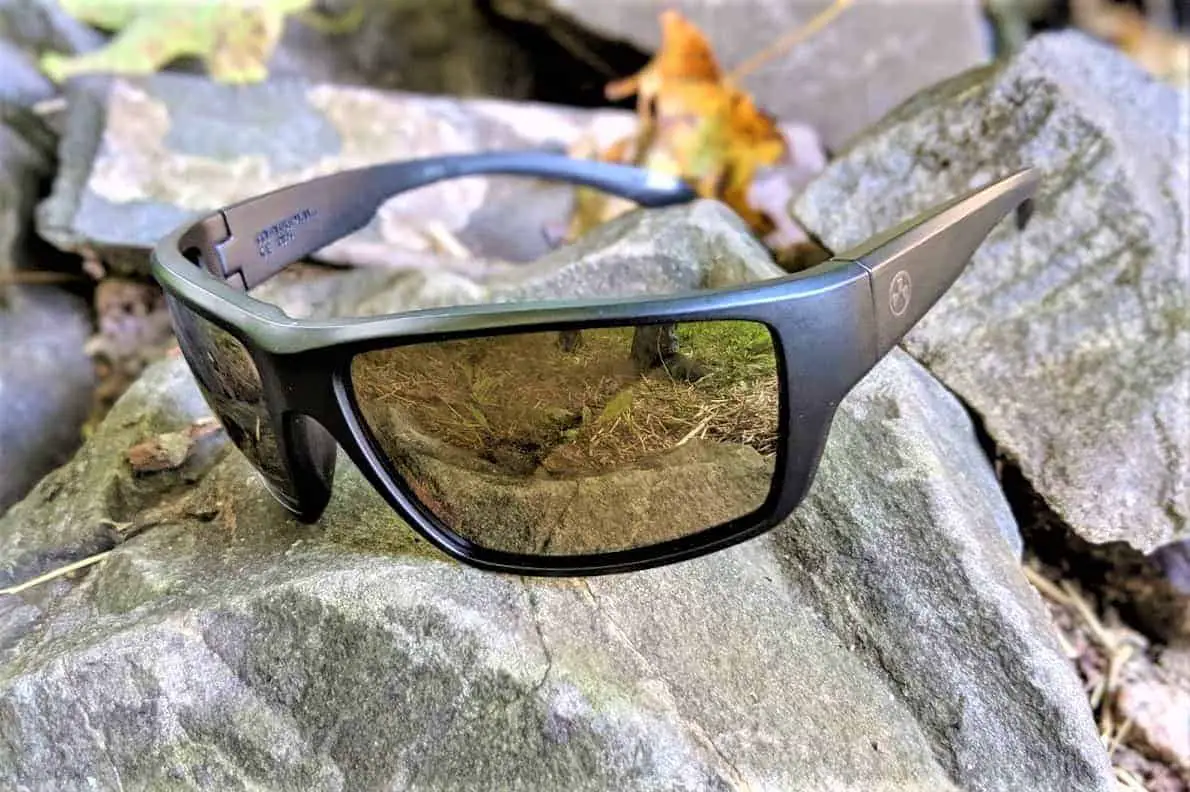
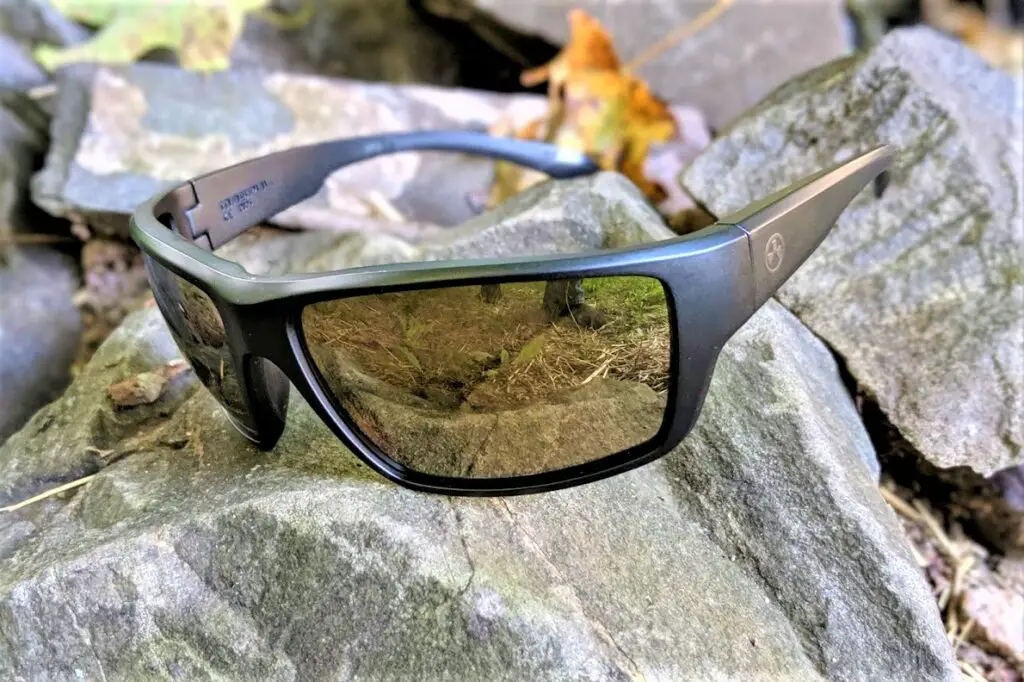 While you weren’t looking (or perhaps while your eyes were recovering from debris damage), sunglasses have quietly evolved from simple “shades” to keep the sun’s glare from your eyes into a full-on vision-enhancing system that offers protection of the ballistic and UV sorts. Lots of companies have popped up offering superior sunglasses, but recently, a small, rowdy, upstart company you’ve probably never heard of –
While you weren’t looking (or perhaps while your eyes were recovering from debris damage), sunglasses have quietly evolved from simple “shades” to keep the sun’s glare from your eyes into a full-on vision-enhancing system that offers protection of the ballistic and UV sorts. Lots of companies have popped up offering superior sunglasses, but recently, a small, rowdy, upstart company you’ve probably never heard of – 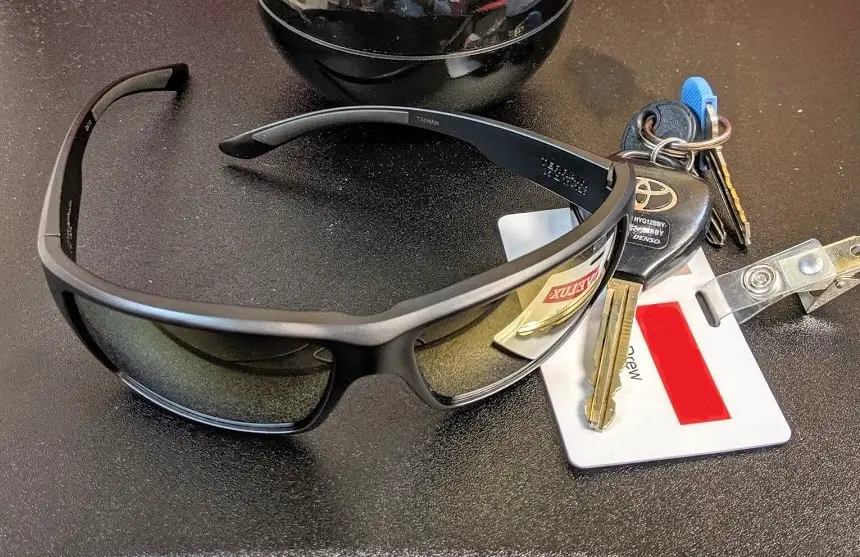 The entire Terrain glasses envelope meets not only the US civilian ANSI Z87+ high-impact standard test rating for safety, but also the military NATO standard MIL-PRF 32432 for ballistic protection of eyewear. These military standards mean that not only do the glasses pass tests for optical clarity, environmental stability (won’t expand/contract/quit working with temperature or moisture extremes), and UV ray protection, but the glasses also meet the protection requirements against a 0.15 caliber projectile travelling at 640-660 feet per second. As a frame of reference here – if Ralphie in A Christmas Story had been wearing Magpul Terrain sunglasses while fighting off Bad Bart’s wayward gang, he wouldn’t have been reduced to a whiny casualty when his trusty Red Ryder 200-shot carbine ricocheted.
The entire Terrain glasses envelope meets not only the US civilian ANSI Z87+ high-impact standard test rating for safety, but also the military NATO standard MIL-PRF 32432 for ballistic protection of eyewear. These military standards mean that not only do the glasses pass tests for optical clarity, environmental stability (won’t expand/contract/quit working with temperature or moisture extremes), and UV ray protection, but the glasses also meet the protection requirements against a 0.15 caliber projectile travelling at 640-660 feet per second. As a frame of reference here – if Ralphie in A Christmas Story had been wearing Magpul Terrain sunglasses while fighting off Bad Bart’s wayward gang, he wouldn’t have been reduced to a whiny casualty when his trusty Red Ryder 200-shot carbine ricocheted.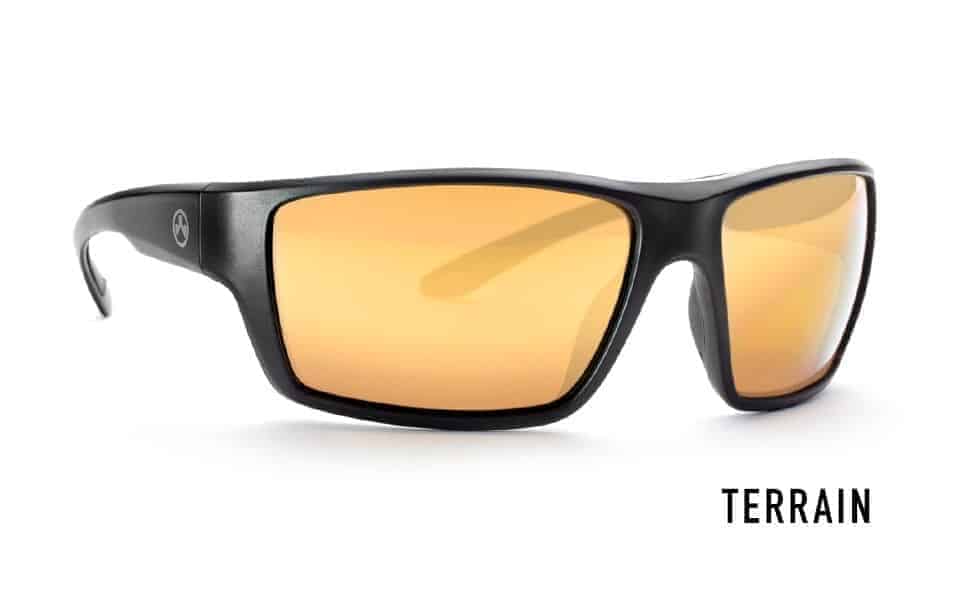
 The only day-to-day weirdness I experienced with the Terrains was due to the polarized lenses – and it is a malady any sunglasses with polarized lenses will suffer. Using a cellphone with the
The only day-to-day weirdness I experienced with the Terrains was due to the polarized lenses – and it is a malady any sunglasses with polarized lenses will suffer. Using a cellphone with the  Wrapping it Up
Wrapping it Up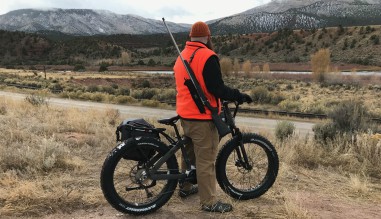
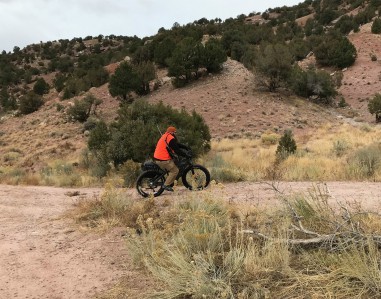 mountain bike on single track, I would not want this much tire. Really fat tires would be heavy and hard to push around on a normal bike but the traction from the fat tires bring is insane, and makes you feel much safer on the mountain. With this being an
mountain bike on single track, I would not want this much tire. Really fat tires would be heavy and hard to push around on a normal bike but the traction from the fat tires bring is insane, and makes you feel much safer on the mountain. With this being an 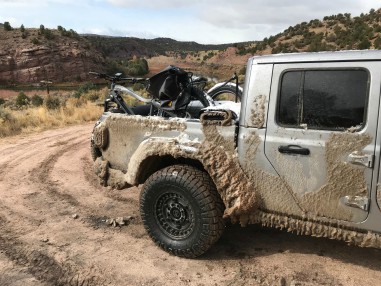 hanging over the tailgate using a
hanging over the tailgate using a 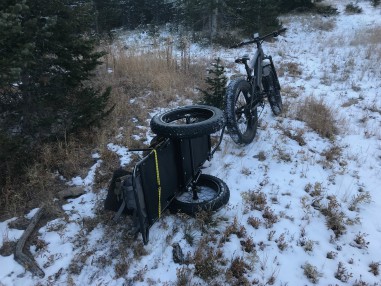 you do have to watch out for larger rocks on the trail with the
you do have to watch out for larger rocks on the trail with the 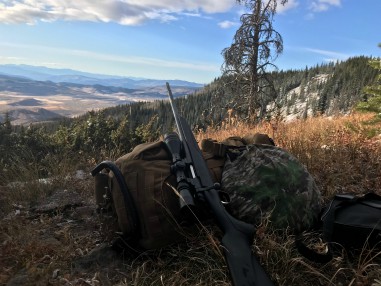 morning we saw 3 elk walk into a pasture on the backside of a mountain at 10,500 feet. Without the QuietKats this would have been a painful journey and getting an elk here would have made for a long day of packing meat out with at least one extra trip up the mountain. With the QuietKat & trailer, just one trip down the mountain, elk & gear.
morning we saw 3 elk walk into a pasture on the backside of a mountain at 10,500 feet. Without the QuietKats this would have been a painful journey and getting an elk here would have made for a long day of packing meat out with at least one extra trip up the mountain. With the QuietKat & trailer, just one trip down the mountain, elk & gear. 